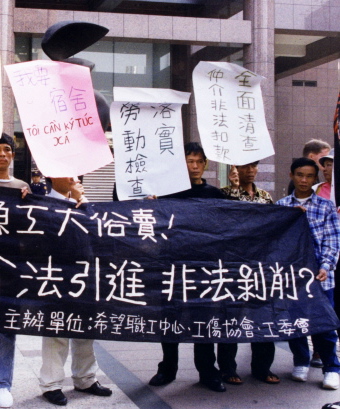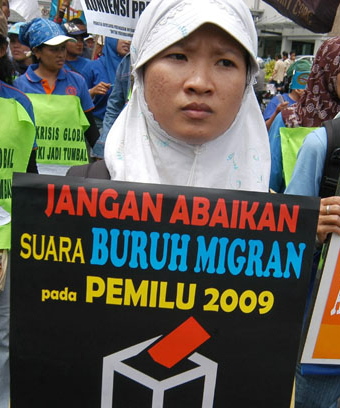LGBT rights and recognition have been under attack in the Indonesian media, for various reasons
Benjamin Hegarty and Ferdiansyah Thajib
In late January a support group for those that identify as lesbian, gay, bisexual and transgender (LGBT) at the University of Indonesia became the unlikely source of a nation-wide controversy when its pamphlets found their way onto social media and into the orbit of Technology, Research and Higher Education Minister Muhammad Nasir. Nasir demanded clarification from the university rector about the status of the group, called Support Group and Resource Center on Sexuality Studies (SGRC), and made public comments condemning it. In statements carried in the mainstream media on 23 January, Nasir claimed that LGBT-identifying people ‘should be banned from entering university campuses’. A deluge of responses in both traditional and new media followed. In response, Nasir himself turned to Twitter to attempt to clarify his comments.
Rather than linking LGBT to transgressive forms of sexuality within Indonesian society more generally, Nasir stressed a concern that campus life should uphold certain standards of decency. He argued that campus life should reflect the role of the university as a utilitarian space for learning, and a benefit to the nation and society as whole. Nasir’s comments struck many observers as harking back to Suharto-era demands that campus life should be apolitical. This is reminiscent of New Order anxieties about student activism that can be traced to the ‘normalisation of campus life’ coined in 1978, which reaffirmed that university campuses should be for productive rather than political purposes. Less surprising was Nasir’s use of moral rhetoric directed at non-normative sexualities and genders, which continues to play a role in Indonesian politics.
However, the media response to coverage of the early 2016 LGBT controversy differed from past events in crucial ways. The diversity of actors who commented on it and the nature of media coverage was caustic, achieving formerly unseen levels of popular condemnation. While transgender, gay or lesbian Indonesians have endured a range of controversies, this is the first in which the entire group – under the acronym LGBT – have become a target of sustained attacks. Depicted as a foreign threat to productivity and the reproductive family, LGBT has emerged as a useful way to direct attention away from problems related to Indonesia’s protracted problems with inequality.
A proxy war
Mainstream Indonesian media outlets have mostly reported on LGBT in a negative light. Many newspaper articles and hours of screen time have been devoted to reporting a wide range of extraordinary claims. This long list of negative associations includes equating LGBT to terrorism, connecting it with drugs and arguing that it weakens national masculinity, destroys morality, is contrary to the idea of the nation and its foundational principles of Pancasila, promotes seks bebas (‘free sex’), exacerbates the HIV/AIDS epidemic and is connected to the sexual abuse of children. The conservative Islamic newspaper Republika was at the forefront of these attacks, publishing a number of alarmist headlines. The most sensational of these claimed that LGBT posed a serious threat to all levels of society due to the increasing visibility of LGBT in social and mainstream media as a ‘lifestyle’ thereby exposing others, especially youth and children, to a ‘collective disease’.
What was remarkable in this case was that the media interest in Nasir’s initial comments and ensuing clarifications precipitated responses from key government and non-government agencies. Vice President Yusuf Kalla requested that the UN Development Program (UNDP) cease financial support for LGBT programs in the country, while other government bodies took exclusionary measures by prohibiting LGBT-related content in different media. For example, the Information and Communication Ministry ordered instant messaging applications including LINE, to remove emoticons depicting same-sex intimacy. In late February, the Indonesian Broadcasting Commission (KPI) issued a formal prohibition against screening on television gendered behaviour deemed to be transgressive. The last time the commission took action like this was in 2008 when it criticised television stations screening content depicting effeminate men, or kebanci-bancian (men behaving like women) in particular.
In February, mainstream religious bodies such as Nahdatul Ulama (NU) and the Islamic Cleric Council (MUI) also waded in with a call for action on anti-LGBT legislation previously hinted at by members of the Prosperous Justice Party (PKS). If such legislation was implemented, it would expand discriminatory measures towards sexual minorities already in place in different regions. These include local bylaws focused on same-sex intimacy in particular, such as the revised ‘Immorality Act’ (2010) in Padang Panjang, West Sumatra and ‘Qanun Jinayat’ in Aceh (2015).
As prominent gay rights activist Dede Oetomo and others have pointed out, this is not the first time that sexual minorities have been targeted. Over the past decade, media representations of homosexuality reveal a common association with criminality, greed and consumerism.
These recent events, however, brought an unprecedented level of media attention that also appears disproportionate to the original medium engaged: a single message posted on Twitter. For some reason, at this particular moment, the LGBT issue touched a nerve in Indonesian politics. This is in no small part due to the fact that the controversy first broke on social media. Twitter and Facebook have a combined estimated total of 84 million active users in Indonesia. Social media has emerged as the main arena for advocating either for or against LGBT in Indonesia. Moreover, it appears that the LGBT debate may have hit a nerve because it raises even broader timely questions about the redefinition of national moral boundaries.
LGBT in the public eye
Despite most mainstream media covering LGBT in a negative light, the Indonesian public is in fact somewhat conflicted on the issue of gender and sexual freedoms. On the one hand, Indonesian society appears relatively tolerant towards the daily existence of alternative sexualities and gender expressions. On the other, the public is susceptible to anti-LGBT rhetoric. Tom Boellstorff describes this as ‘political homophobia’. Through making political claims to rights as citizens, gay and lesbian people and waria (commonly translated, inadequately, as male-to-female transgender women) prompt a vehement public response.
Since the Suharto regime fell, avenues for political conversation have opened up, making way for greater plurality. This includes a space for those outside of state-sanctioned heterosexual relationships, including LGBT-identifying Indonesians. The wide variety of actors involved – political, corporate, state and non-state – supports this view of Indonesia as having a free and open press. However, as the controversy around LGBT highlights, the very infrastructures that have enabled such openness are also easily used to generate new scapegoats and stereotypes.
In the media coverage in early 2016, sexual and gendered minorities were represented as a latent and foreign danger, known only by the acronym LGBT. The mainstream media paints it as a ‘movement’ on the cusp of taking shape. This interpretation supports the idea that this formlessness gives them the ability to infiltrate the nation without detection. Comparisons can be made with the demonisation of Indonesian Communist Party (PKI) members and their followers from the mid-1960s and with the ‘criminals’ targeted in the ‘mysterious killings’ of the 1980s. Media interest in particular behaviours and types of people has been commonplace in contemporary Indonesia since this period.
This particular period of protracted media interest draws part of its strength from the lack of specificity about the meanings of LGBT. LGBT itself has, until recently, meant little to most Indonesians. As such, the media reporting and associated commentary has appropriated this term to stand for a latent threat. Defence Minister Ryacudu expressed it best when he described LGBT’s danger as more serious that the threat of nuclear warfare, because of its shapelessness. ‘It's dangerous as we can’t see who our foes are, but out of the blue everyone is brainwashed’, he is reported to have said. While use of the terminology ‘organisation without form’ (used also for the PKI) may have evoked a particular kind of fear under the New Order regime, its invocation has a different impact today. It relies on a particular ideal of morality in which LGBT is portrayed as a foreign threat to national productivity in general and the reproductive family in particular.
Why LGBT, why now
In this recent case, LGBT rights groups, government officials, NGOs, religious organisations, the press and those who suddenly found themselves to be LGBT, were caught off guard. Nasir himself was left scrambling to clarify his position, seeing him reach for inadequate New Order terminology pertaining to the dangers of campus life and activism.
Each with a particular moral authority, politicians, religious organisations and national institutions flooded the media with moral rhetoric against LGBT, shedding light on new forms of political power in Indonesia. For example, media representations of LGBT indicate hostility towards a particular set of values associated with secular liberalism. The production of such binaries framed in absolute terms – LGBT and the West, and anti-LGBT and Indonesia – appears to be part of a broader refashioning of political culture.
Moreover, the persecution of sexual minorities has indeed played out in concrete ways. These issues have received little to no media attention. Overshadowed by the sensationalist reporting across the national media landscape, vulnerable groups and low-income people in various regions in Indonesia continue to face structured abandonment and violence. A recently installed bylaw on beggars and vagrants in Yogyakarta, Perda No. 1/2014, has led to the persecution of street musicians, including waria. In Aceh, on the other hand, women socialising in pairs are now deemed eligible for detention by the sharia police due to alleged lesbianism, while scores of waria were detained by similar apparatus in September 2015 on false accusations of prostitution. In a similar vein, also in Aceh, working-class waria are about to lose their main livelihood in beauty parlors due to the prohibition of any form of gender-nonconforming expression in public.
Such forms of persecution are growing, albeit in diverse forms throughout Indonesia. However, for the most part, the mainstream media has shown little interest in such issues, which relate to all Indonesians regardless of gender or sexual orientation. These concerns relate not to any particular group but rather to the growing inequality between social classes and geographical locations that has accompanied rapid economic transformations throughout Indonesia. As a hollow form of moral retribution, the LGBT controversy has successfully diverted public attention away from such issues, channeling it towards an invisible threat.
Benjamin Hegarty (benjamin.hegarty@anu.edu.au) is a PhD candidate in Anthropology at the Australian National University.
Ferdiansyah Thajib (f.thajib@fu-berlin.de) is currently a PhD candidate at the Institute of Social and Cultural Anthropology, Freie Universität Berlin, Germany.















